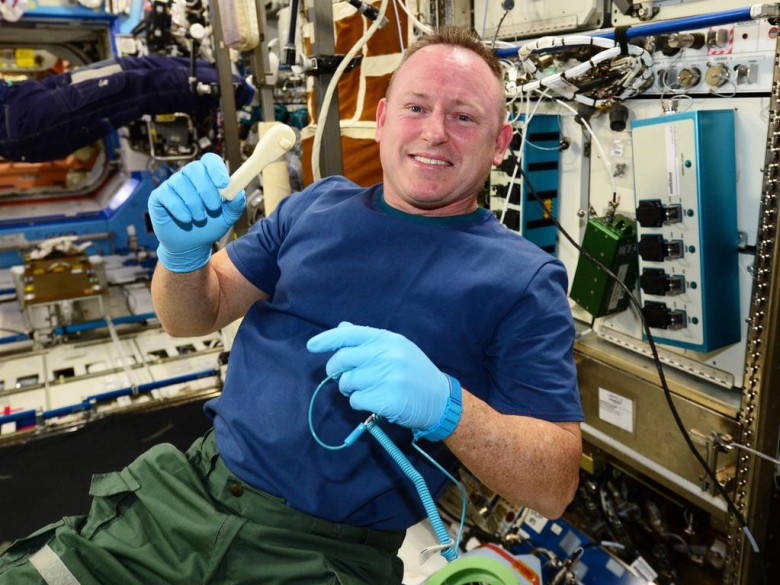Last month, ISS commander Barry Wilmore commented to NASA that he was in need of a ratcheting socket wrench. In the past, when such a request was made, the Agency would have normally added it to a laundry list of other necessary supplies and flown it up a few months later in a supply run to the Station.
Instead, when Wilmore made the request, the group designed the tool and emailed the design to the 3D printer aboard the ISS, whereupon it was printed out and ready for immediate use.

Mike Chen, the founder of Made in Space, the company that created the 3D printer aboard the ISS, said, “We had overheard ISS Commander Barry Wilmore mention over the radio that he needed one, so we designed one in CAD and sent it up to him faster than a rocket ever could have.”
If it all sounds incredibly simple, it’s because it actually is this easy. The design process went as follows:
• First the part was modeled in a CAD software program (e.g., Autodesk’s Inventor)
• Then the file was sent to NASA
• Next, the Agency transmitted it to the ISS by way of the Huntsville Operations Support Center
• Finally, the 3D printer received the file and began generating the part, layer by layer.
“What I’m really excited about is the impact this could have on human space exploration beyond Earth orbit,” Chen wrote. “When we do set up the first human colonies on the moon, Mars, and beyond, we won’t use rockets to bring along everything we need. We’ll build what we need there, when we need it.”
Since the first 3D-print job on the ISS in November (a replacement part for the 3D printer itself), there have been 19 others. What’s interesting about this roster is that all 20 of the parts were designed on Earth prior to the printer’s trip into space; the wrench, on the other hand, marks the first time an outer-world need was identified and met on a purely reactionary and not pre-determined basis.
“The socket wrench we just manufactured is the first object we designed on the ground and sent digitally to space, on the fly,” Chen explained. “It also marks the end of our first experiment — a sequence of 21 prints that together make up the first tools and objects ever manufactured off the surface of the Earth.”
Via VentureBeat
Advertisement
Learn more about Electronic Products Magazine





